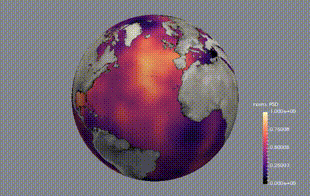Microseismicity modeling
At the Swiss Seismological Service I model wave propagation of microseismic events in the
Utah FORGE site and related rock labs. The obtained waveforms will allow us to test detection and location algorithms, and will be a first step towards the application of full waveform inversion techniques in geothermal reservoirs. This work is done in the context of the
DEEP project in and collaboration with
Mondaic AG.
Basin resonances and site effects
For my past position as a postdoctoral fellow at University of Washington, I studied the basin response of the Mexico city basin and its change through time with the help of ambient noise recordings, exploring recently deployed sensors by
Grillo.
During my MSc project, under the supervision of
Dr. Valerio Poggi , Prof. Donat Fäh, and others, I studied the
seismic response of the sediment fill of the deep, glacially carved Rhone valley. The narrow, elongated, thick sedimentary deposit produces strong resonances whose modes can be observed in the ambient noise.
Ambient seismic source inversion
I continuously develop
numerical modeling procedures for auto- and cross-correlations of ambient seismic noise propagating through three-dimensional Earth structure. Such models form the basis for iterative inversion obtaining the time-, location- and frequency- dependent source power spectral density of ambient noise sources. This work was started during my PhD in the
ETH SWP group, and current members of the group actively co-develop these methods.
Sources of the Earth's "hum"
In a first application of iterative noise source inversion with 3-D seismic structure, we constructed a model for the
sources of the Earth's hum (see the pitifully aliased gif above!) during Northern and Southern hemisphere winter.

